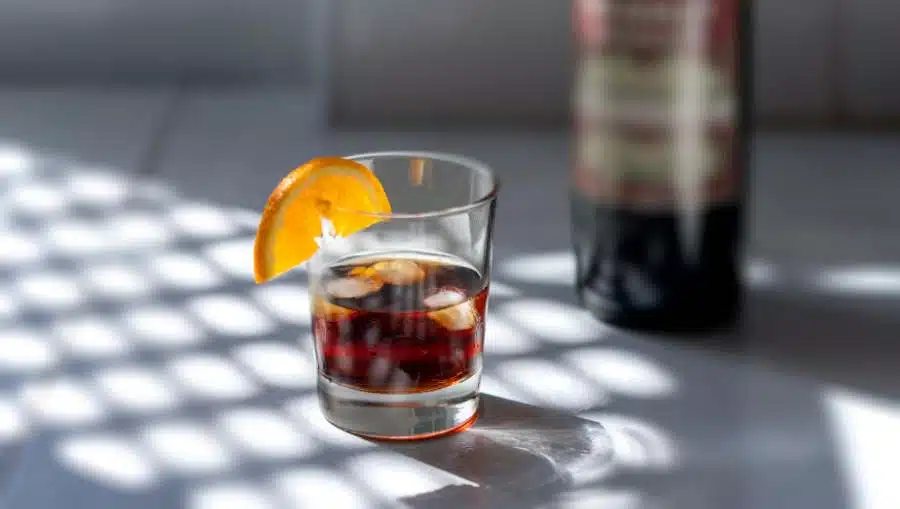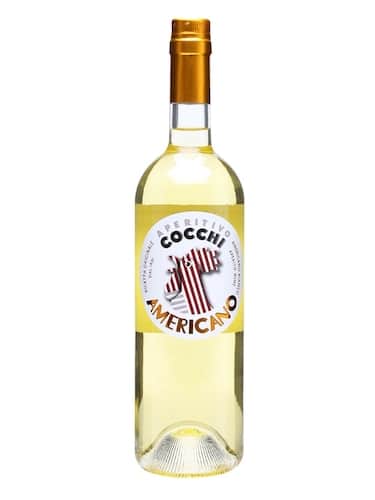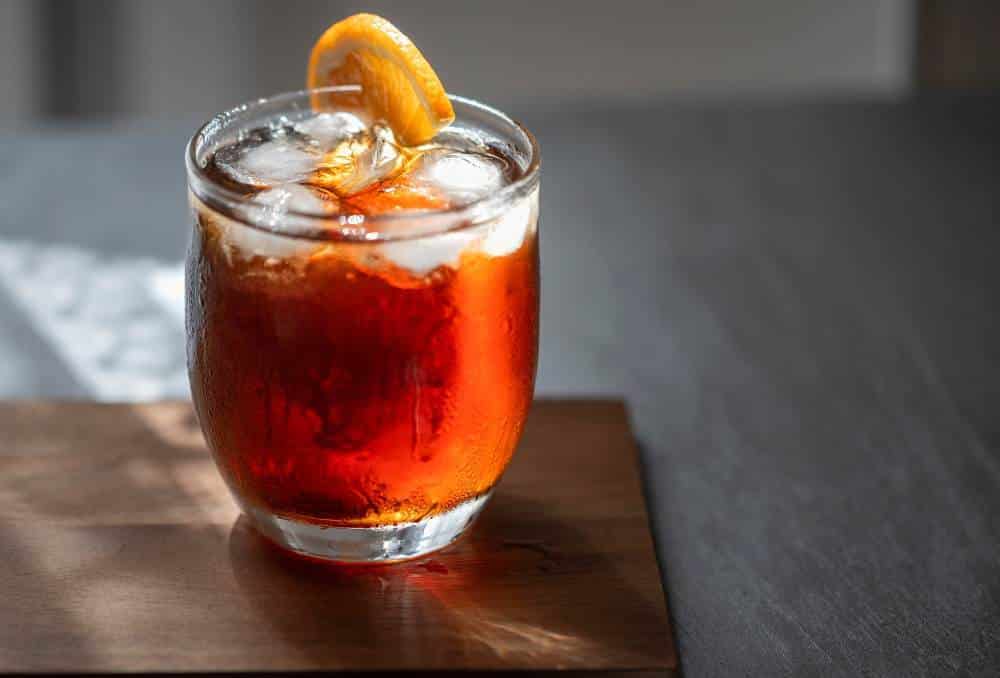Vermouth comes in various types, colors, and levels of sweetness. Dry vermouth, sweet vermouth, red vermouth, and white vermouth are just the tip of the iceberg. Technically, vermouth is a fortified wine flavored with botanicals. Cinnamon, gentian root, orange, wormwood, cinchona bark, chamomile, and coriander are common flavoring ingredients and show in the taste profiles of many vermouths.
Among the most popular vermouth brands are Martini & Rossi, Cinzano, Dolin, and Noilly Prat. However, there are many more to discover, and depending on the drink you want to make, the best choice of vermouth may vary.
As a bartender, with a true passion for vermouth and cocktails made with it, I was frustrated with the lack of quality information about vermouth online. I tried, tasted, and reviewed a ton of different vermouth in my life. That's one reason I did my own research to craft this comprehensive guide to vermouth.
Introduction to Vermouth

The term vermouth originally comes from the German word "Wermut," which is the German term for wormwood (lat. Artemisia absinthium). Wormwood, or Artemisia in Latin, is the essential herb without which a vermouth is simply not a vermouth.
Every vermouth is both an aromatized and fortified wine with a moderate ABV of 15-18%. To make aromatized wine, you macerate wine in botanicals like herbs, flowers, roots, spices, bark, and other organic ingredients. The term fortified means that a high-proof distillate is added to the wine base to increase the alcohol content.
That is the essence: wine flavored with botanicals and enriched with a spirit. In taste, it is a little bitter, more or less sweet, with a complex flavor profile that can vary in a single sip between fruity, herbal, herbaceous, sweet, and savory.
Legal Specifications for Vermouth
As vermouth originally comes from Europe, the European Union has much stricter rules and laws that regulate what can be classified as vermouth. In the United States, legal specifications are considerably less strict.
Vermouth from the EU
Every vermouth produced in the EU must contain some kind of artemisia, and have an alcohol content between 14.5% and 22.5%. Most brands use the traditional Artemisia absinthium, which is also used to produce Absinthe.
Like other aromatized wines, the grapevine products used to produce vermouth must represent at least 75% of the total volume. The type of alcohol used to fortify the wine base is not regulated. The EU solely states that you can only name a product vermouth "to which alcohol has been added."
To sweeten vermouth producers can use sugar, honey, caramel, and other natural sweeteners. Also, the classifications from extra dry to sweet are specified as:
- Extra Dry: Less than 30 g sugar per l
- Dry: less than 50 g/l
- Semi-Dry: 50 g/l – 90 g/l
- Semi-Sweet: 90 g/l – 130 g/l
- Sweet: >130 g/l
In 2023, there's only one geographical designation for vermouth recognized by EU law: Vermouth di Torino.
Vermouth di Torino is a sweet, red vermouth from Turin, Italy. It's based on Italian grape wine and primarily bittered with Artemisia. The alcohol content must be between 16% and 22%, and to sweeten the vermouth, only a few natural ingredients are allowed, including honey, grape must, sugar, and caramel.
Since 2017, there's also been Vermouth di Torino superiore. This geographical designation only allows products made at least 50% based on wine growing in the Piedmont region.
Vermouth from the United States
The rules for vermouth produced in the USA are significantly less strict. The main characteristic is that it needs to contain 15% alcohol by volume. Producers don't need to use Artemisia, there's no maximum ABV, and any aperitif wine that looks, smells, and tastes like vermouth can legally be labeled as such.
As you can see, the rules are vague and barely exist. Hence, this loose definition is the subject of many discussions between European and American vermouth producers.
The Different Styles of Vermouth

Vermouth is produced in all parts of the world, yet the majority comes from Italy, France, and Spain. When talking about vermouth, there are three common categories:
- Dry Vermouth: This includes all sec, seco, and secco varieties
- White Vermouth: This includes Blanc, Bianco, and Blanco vermouth.
- Sweet Vermouth: Typically red, this includes Red, Rosso, Rouge, and Rojo vermouth.
Historically, dry vermouth and (sweet) white vermouth were referred to as French-style or French, and sweet vermouth (red vermouth) was commonly known as Italian.

Dry Vermouth
Dry Vermouths are crucial for several cocktails like the Martini or the Brooklyn Cocktail. Being made from white wine and without adding any sugar, it is very, very dry. And because additional sugar is not allowed in a dry Vermouth, only the sweetness levels of the grapes define how dry the final product will be.
Usually, an unaged spirit is used for fortifying the wine. And by adding botanicals and spices to a dry Vermouth, it gets some citrusy and herbaceous notes.
My Dry Vermouth Recommendation: Noilly Prat and Dolin Dry.

Sweet Red Vermouth or Rosso / Rouge / Rojo
Sweet vermouth is a main ingredient in several classic cocktails like the Negroni or Manhattan. This type is also often called Rosso, Rojo, or red. It is rich in taste, bolder, and sweeter than its white counterparts.
Historically, red wine was the base for his vermouth, but today, white wine builds the ground, as it does for the other types.
In a Sweet Vermouth, sugar can be up to 15%. That's fairly sweet, but also vital for making it bold and rich enough. Some fine bottles of this type are Carpano Antica Formula, Cocchi Vermouth di Torino, and Carpano Punt e Mes.
My Sweet Vermouth Recommendation: Carpano Antica Formula

Sweet White Vermouth or Blanc / Blanco / Bianco
This type is somewhere in between the first two. It's white in color and neither as dry as a Dry Vermouth nor as sweet as a Sweet Vermouth. The same is valid with regard to the flavor. It's like a blend of the two other types. Floral and herbal notes mix with notes of vanilla and cinnamon.
As this type is somewhat of a combination of both types, it works as a substitute for Dry Vermouth and Sweet Vermouth.
Bianco is very versatile and is an excellent choice for your home bar. Some great bottles are Cocchi Americano, Mauro Vergano Bianco, and Mancino Bianco Ambrato.
My Sweet White Vermouth Recommendation: Cocchi Americano

Rosé Vermouth
Rosé Vermouth is a new style of vermouth, made from a split base of red and white wine. However, it is not internationally recognized as a category of its own, as the other three types are. Nonetheless, there are still plenty of Rosé Vermouths available.
If you can get your hands on a bottle of Belsazar Rosé Vermouth, take one to experience the difference from the more established types. Most Rosé Vermouths are bittersweet and citrusy, perfect for summer drinks.
My Rosé Vermouth Recommendation: Belsazar Rosé Vermouth
History of Vermouth
The history of vermouth dates back to the 15th century. Back then, it was produced for medical use only. -Nothing uncommon in the world of mixology, where spirits & cocktails initially were intended to cure illnesses. Some other famous examples are the Gin and Tonic or the Mojito cocktail.
The geographical origin of vermouth lies in Europe. Italy and France are probably the most famous places to produce vermouth. But Spain and Germany were also large-scale producers of this fortified wine.
After being flavored and aromatized with various herbs and botanicals, it gets fortified by adding higher-proof spirits. If all this sounds Greek to you, don't worry, and read on.
The Processes of Making Vermouth
Italy and France are the leading producers of vermouth, yet fortified wine is also produced in the United States lately. To be upfront, the process of making American Vermouth hasn't much in common with the traditional ones. So, I want to explain the differences between them first.
Traditional Vermouth production
In Italy, vermouth production starts with pressing a mild low-proof wine made from Bianchetta Trevigian, Cataratto, or Trebbiano grapes. The wine made of these grapes needs to age for a while. By Italian law, that is at least for one year. And, if you want to make a sweet Vermouth, syrup is added to the wine.
In the next step, the aged wine is fortified with grape spirits to increase the alcohol levels. A maceration process brings all those amazing aromas and flavors to the wine by flavoring the wine with several botanicals.
French Vermouth production is quite similar. Apart from the grape species used, the main differences are the aging time for the wine base and the spirit used to fortify it. The base wine is usually aged two to three years and then gets fortified with brandy instead of grape spirit.
American Vermouth production
In the United States, the rules for making vermouth are much less strict. Producers only need to make sure to create a fortified wine of at least 15% ABV that has the aromas and flavors of a typical vermouth.
Fortification
Fortification is the process of increasing the amount of alcohol in a drink by blending it with high-proof liquor. Italian Vermouth usually uses grape spirit like Grappa. In France, brandy is the regular choice for increasing the level of alcohol.
By the way, besides vermouth, there are many other famous fortified wines like Port, Madeira, Lillet, and Sherry.
Maceration
The Maceration process allows the absorption of all those beautiful flavors of herbs, spices, and botanicals. This step requires a lot of attention. The composition of those herbs and botanicals is significantly different between products. And they're of great importance for the quality and taste of the final product.
To give you an idea: between 10 and 30 herbs or botanicals are part of the maceration process. And as every recipe is different, each brand keeps its recipe secret.
The mix matures and develops for up to 45 days, to fully infuse with aroma and flavor.
The Taste of Vermouth
Every brand and every type of vermouth has individual notes. But trying to give you a general answer, vermouth tastes much like aromatized wine with herbal, floral, and spicy notes. You will most likely be able to taste notes of lavender, rose, cinnamon, cardamom, citrus fruits, licorice, angelica, and wormwood.
How to Store Vermouth
As soon as you open a bottle of vermouth it will start to oxidize. Some brands add sulphur dioxide to their products to minimize this effect, but it can't prevent oxidation completely. For that reason, always store your vermouth tightly sealed in the fridge to minimize this effect.
The reason is that oxygen reacts with the esters and terpenes responsible for the light, fresh, and fruity flavors of your vermouth. If you don't store it in the fridge, the flavors will fade after the first 24 to 48 hours. After two to four weeks, the flavors in drier vermouths are almost gone.
The good news is that vermouth lasts a bit longer than regular wine. Where wine will lose its aroma within a week, vermouth can last for up to three months when stored correctly. Keeping an opened bottle of vermouth in the fridge will help to prevent a quick loss of aroma. The reason is simple: colder environments always significantly slow down chemical and physical processes.
If you only use and drink vermouth occasionally, buy smaller 375ml bottles.
Different Ways to Drink Vermouth

Vermouth is indispensable when making favorite classic drinks like Negroni or Martini. But if you're not into those classics, vermouth is the typical ingredient you once bought to make a cocktail, and now it's sitting tightly next to the crème de menthe, collecting dust. Here's what you can do instead:
You can enjoy vermouth in many different ways. Traditional, but these days uncommon, is serving it neat on the rocks with a slice of citrus fruit. To get a more refreshing drink, mix it with soda or tonic water and garnish it with a wedge of orange.
Popular Vermouth Cocktails
If you're looking for drinks to make with vermouth, here are some classic recipes you should give a try.
- Negroni: This Italian cocktail is one of the most popular aperitif cocktails made with gin, sweet vermouth, and Campari. Stir the drink on ice, strain over a large ice cube, and garnish with an orange twist, this drink is a superb way to prepare your stomach for an upcoming meal.
- Dry Martini: The classic combination of gin (or vodka) and dry vermouth is an all-time classic. The strong juniper notes of gin pair well with the floral and herbal flavors from vermouth. Garnish it with a lemon twist
- Vermouth cocktail: This drink is a perfect way to experience any style of vermouth. Use 2 ounces of vermouth combined with one dash of Angostura bitters. Stir the mixture on ice and strain into a small, stemmed cocktail glass.
- Rob Roy: An elegant composition of whiskey, red vermouth, and orange bitters.
Final Verdict
Vermouth is a very versatile and delicious cocktail ingredient. This fortified wine is a key to many classic and modern drinks. And you don't have to use it in a cocktail. Serve it on the rocks with some citrus fruits to get an aromatic drink to sip. What is your favorite vermouth? Let me know in the comments.


In Torino my hometown Martini & Rossi was in the 50s the most well known. Yet you make no mention of it. What has changed?